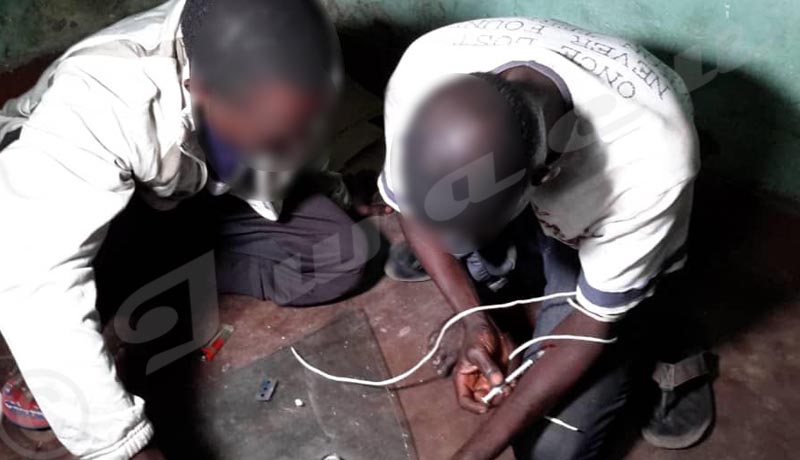10.2% is the seroprevalence rate among drug users, especially injectables, in the town hall of Bujumbura. The latter are the second most vulnerable to HIV AIDS in BuOne syringe for every 10 injecting drug users or needles collected from the trash. This is a reality experienced by many young addicts in urban areas.
 According to Eric Nsengiyumva, coordinator of the association of former drug users (Bapud), in the town hall of Bujumbura, more than 10% of drug users, especially injecting drug users, are carriers of HIV AIDS, according to a survey by the Ministry of Health. It is the second most affected category in Burundi, after sex workers.
According to Eric Nsengiyumva, coordinator of the association of former drug users (Bapud), in the town hall of Bujumbura, more than 10% of drug users, especially injecting drug users, are carriers of HIV AIDS, according to a survey by the Ministry of Health. It is the second most affected category in Burundi, after sex workers.
More than 50% of HIV patients at the Holistic Youth Center for HIV-positive young people are drug users, according to Audrey Inarukundo, executive director of the National Network of HIV-Positive Youth (RNJ+).
The coordinator of the Bapud association and former drug addict explains this vulnerability by the use of the same syringe by several users: “You can find 8 to 10 users for the same needle. He says that drug users cannot afford needles, their priority being drugs. He confides that some pick up used syringes from the garbage cans.
This high rate of HIV-AIDS among drug users is also explained by the fact that drug users, especially girls, engage in prostitution in order to afford drugs, according to Mr. Nsengiyumva. He says that another “strange” phenomenon is that young men who are addicted to drugs use homosexuality to raise money for drugs.
This year, 13 drug users died from overdoses, HIV AIDS and tuberculosis, according to Eric Nsengiyumva. This year, 1,785 people, mostly young people, assumed drug use in 5 provinces (Bujumbura-mairie, Gitega, Rumonge, Ngozi and Muyinga).
Today, drug users are of all social categories, according to Bapud’s coordinator. It is no longer just, he says, people from the wealthy, even the poor.
Global 90-90-90 target not quite met
The UNAIDS 2020 target of 90-90-90 is that 90% of people living with HIV know their HIV status. That 90% of HIV-positive people receive sustainable treatment. And that 90% of them have an undetectable viral load.
In Burundi, this objective has not been fully achieved. For the first part, 81% of Burundians were screened out of a total of more than 85 thousand expected, according to the director of the National AIDS Programme (PNLS), Dr Aimé Ndayizeye. Of these cases, almost all are on treatment.
As for the third part, Dr Ndayizeye says that not all people on treatment have been able to afford the HIV viral load test. 88% of HIV-positive people on treatment were able to do so.
World AIDS Day was celebrated at a time when the seroprevalence rate in Burundi has been 0.9% since 2017. A big step forward for the Ministry of Health which indicates that this rate was 6% in 2010.
The lack of means to access other drugs for opportunistic infections is the big challenge faced by HIV-positive youth, according to the RNJ+ Executive Director.
38 million people are living with HIV, 67% of them in the African region, according to WHO Regional Director Dr Matshidiso Moeti. 440 thousand people died as a result of HIV AIDS in the region.















 IWACU Open Data
IWACU Open Data

